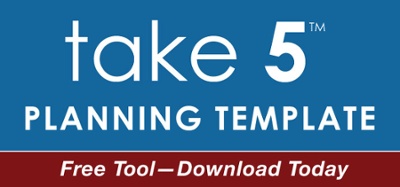Define the ‘Outcome’ as 1st Step to Effective Communication
 3D graphics image by Quince Creative
3D graphics image by Quince CreativeWe spend a fair amount of time talking with our clients and the leaders we work with about “desired outcomes” – the first step in planning any kind of communication.
When we ask, “What’s the outcome you seek?” we often get a communications goal (that’s helpful to know but communications should never be an outcome; it’s a means to achieving a business outcome). When we follow-up: “What’s the business outcome you seek?” we also often get fuzzy business goals.
Clarifying the Concept of a Business Outcome
That said, I thought it would be valuable to define the concept of an outcome given its importance. The better we can define what we need to accomplish, the better the chance we will succeed at achieving it. After all, if we don’t know where we’re going, how will we get there? And, as was the case in Alice in Wonderland, “any road can get you there.”
The dictionary defines an “outcome” as an observable end result, a consequence, a change in business performance, something that follows from an action. It’s also defined as a conclusion reached through the process of logical thinking.
When we ask about a desired outcome, we want a business objective. That is, a measurable result like widgets sold, customers served, share of market, or people in seats. This kind of outcome is a consequence of action by teams and individuals whose goal is to deliver on the business objective.
Another way to look at this: If what you want to achieve isn’t about moving the business forward, it’s important to think long and hard about whether this goal is worth doing at all.
These are about the agenda one might have, or goal, but not an outcome that will drive smart and strategic communication planning. There might be other outcomes you want to achieve that are secondary and might be less measurable but still important: Build a critical relationship inside an organization, get a seat at the table, or get promoted.
With the outcome defined, you’ve taken the first step in developing a communication plan that will help you achieve your goal.
Four Other Key Areas for Effective Communication
Our “Take 5 to Communicate Well” tool for leaders spells out the other key areas that are essential for an effective communication plan. They are:
- Audience. Who needs to be involved to achieve the desired outcome? What action needs to be taken by that individual or group, or the entire organization? If you consider the critical people and what they need to think, feel or do to achieve the outcome, you’ll have a clear focus for your communication planning.
- Messages. To achieve the desired outcome, you need messages that will inspire the defined audience to take the necessary action. What information might motivate them to act? Do they need to know more about a problem, a competitive challenge or an opportunity? This information becomes the content for your core messages.
- Tactics. How should your target audience be reached with your messages? The best tactics will depend on the type, size and reach of the audience and the way they prefer to get their information. Important communications should be delivered through multiple channels.
- Measurement. What does success look like? The measurement you choose should link back to your desired outcome. It also may include measures to check communication effectiveness, such as media metrics, site visits, or numbers of people reached through meetings or other communication tactics.
Like any activity that is focused on getting results, communication plans need to be based on a clear goal or “desired outcome” to be effective. It’s worth the time and thought to create a solid first step that will be the foundation of a successful plan.
What are the most important business outcomes you seek for your organization?
—David Grossman
Click below to download the Take 5 Planning Template to map out your communication — whether it’s to one person, a group or an organization.


Comments on this post